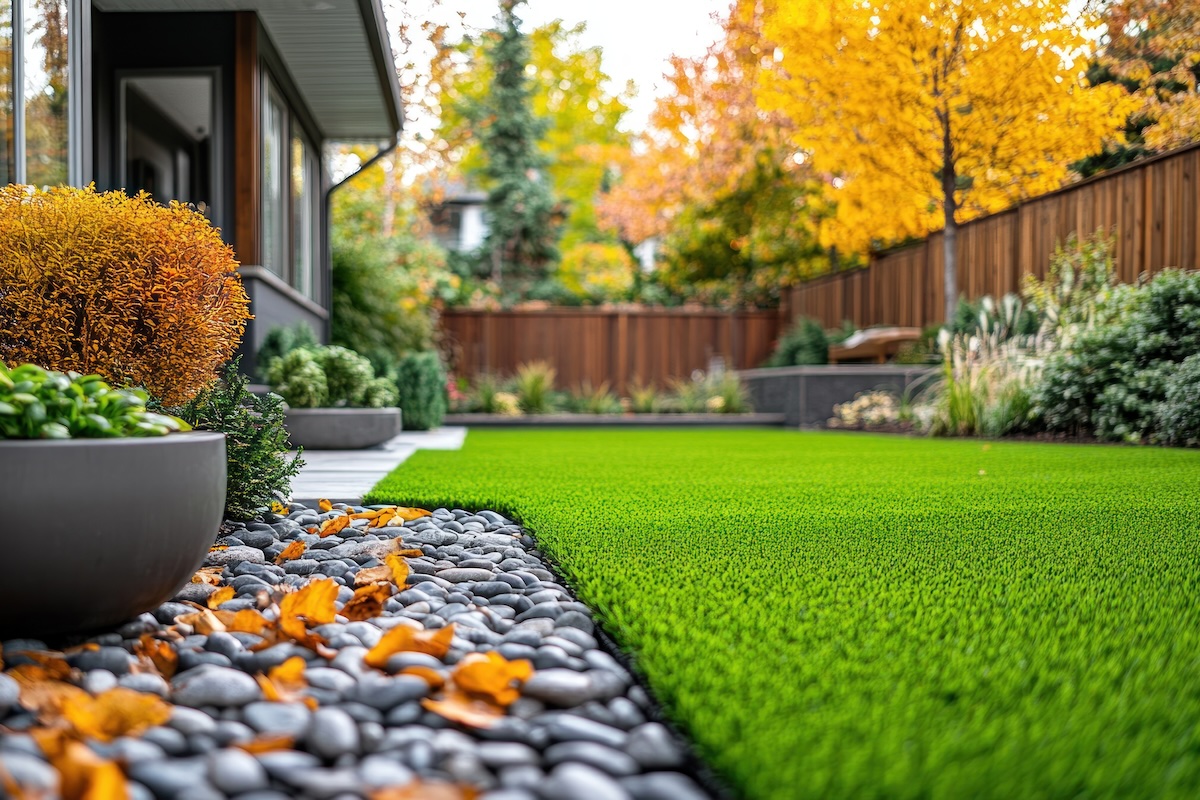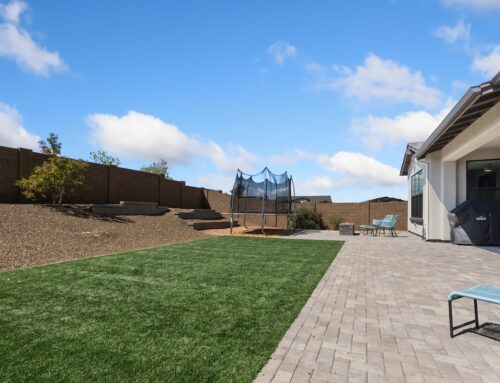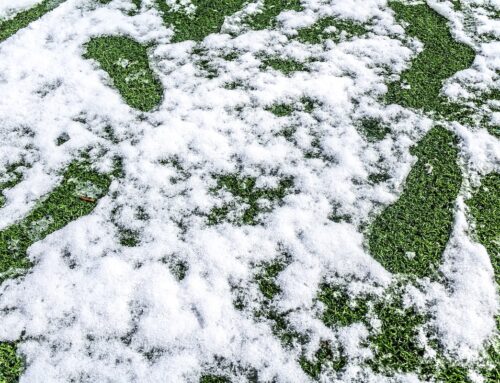Last Updated on September 6, 2025 by ReTurf
Artificial turf has exploded in popularity over the last decade, moving far beyond golf courses and stadiums into backyards, playgrounds, and even rooftops. Homeowners and businesses alike have realized it offers year-round greenery, drastically reduced maintenance, and long-term savings compared to natural grass.
But here’s the question people rarely think to ask: Does it matter when you install it?
Yes — timing can influence cost, installation quality, and how quickly you can start enjoying your investment. And while summer tends to be the season most people picture, professional installers will tell you that fall is one of the smartest times to put down synthetic turf.
Of course, if your lawn is already a headache or you’re ready to make the switch, waiting for a perfect season isn’t always necessary. The best time to install may simply be the moment you’re ready, with autumn offering some of the clearest advantages if you have the option.
Timing Your Turf Installation

Artificial grass doesn’t need fertilizer, irrigation, or mowing, but it does need to be put in correctly from the beginning. Timing can make a difference because fall often provides very favorable conditions for installation—though in practice, the right season may simply be the one that fits your climate and schedule.
- Ground Conditions: Soil moisture, compaction, and drainage are easier to manage in some seasons than others.
- Temperature: Adhesives and infill materials perform differently depending on weather. Extreme heat can soften turf backing, while extreme cold can hinder curing.
- Installer Demand: The busier the season, the harder it is to schedule crews and the higher the costs may run.
- Lifestyle: Installation takes your yard offline for a bit, so when you choose to schedule it can affect how much time you lose enjoying the space.
Now let’s see why fall lines up so well across all of these factors.
Seasonal Advantage #1: Perfect Ground and Weather Conditions
Fall usually offers milder temperatures and more stable soil conditions than summer or winter. This makes life easier for both pro installers and DIY homeowners.
- Temperature sweet spot: Most turf adhesives and seam tapes cure best between 50°F and 80°F. Fall naturally hits this range in many regions. In summer, adhesives can flash-cure too quickly or fail to bond if the surface is scorching. In winter, curing slows dramatically and can compromise seam strength.
- Soil workability: If your installation requires base preparation (gravel, decomposed granite, drainage layers), fall’s moderate soil moisture keeps dust down but avoids the waterlogged mess of spring rains. That means excavation, leveling, and compaction are cleaner and more predictable.
- Less expansion/contraction stress: Turf backing expands in heat and stiffens in cold. Installing during fall minimizes stress on seams and edges, setting a stable baseline that will hold up through seasonal shifts.
Pro tip: If you live in a region where frost arrives late, installers can often work comfortably through early November before weather becomes an obstacle.
Seasonal Advantage #2: Smoother Base Preparation and Drainage Setup
One of the most critical steps in turf installation is building the base that sits beneath it. That base, usually a mix of compacted aggregate and sand or decomposed granite, controls how well your lawn drains, how stable it feels underfoot, and how long it lasts before any shifting occurs.
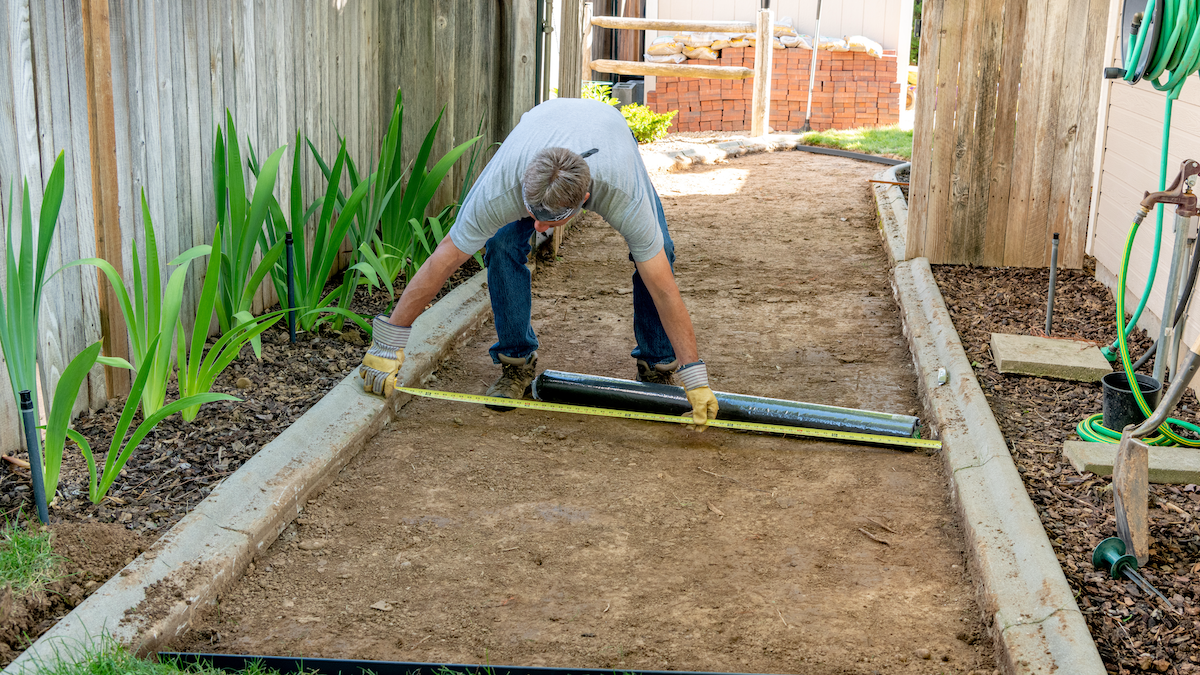
Fall conditions make this process more predictable. Summer soils can be bone-dry and dusty, while spring soils are often waterlogged. Fall usually strikes the middle ground, which allows grading crews to cut, fill, and compact more cleanly. Cooler weather prevents the base materials from expanding or drying too quickly, meaning they settle more evenly and lock into place.
With autumn rain showers, you also get an early look at how the drainage layer handles runoff. If water pools anywhere, it can be corrected before winter freezes set in.
When the foundation is done right, the turf system above it performs better in every season—resisting frost heave in winter, draining quickly after spring storms, and staying level under summer foot traffic. Fall gives you the clearest path to getting that foundation correct from the start.
Seasonal Advantage #3: Installer Availability and Pricing
Summer is peak season for landscapers and turf companies. Schedules fill months in advance, and pricing tends to reflect that demand. By contrast, fall offers:
- Shorter wait times: Crews are less overbooked, so you can secure your preferred company and installation dates more easily.
- Potential discounts: Some companies offer seasonal promotions in fall to keep projects rolling before winter downtime. This can save hundreds or even thousands depending on yard size.
- More personalized attention: With fewer jobs stacked, installers have more bandwidth to focus on the details of your project—ensuring better quality control and customization.
In other words, fall lets you take advantage of a slower market without sacrificing results.
Seasonal Advantage #4: Year-Round Payoff
When you install in fall, you’re set up to enjoy the benefits immediately and continuously.
- No winter prep: Natural lawns need aeration, seeding, fertilizing, and irrigation blowouts in fall. Turf needs none of that—so once it’s in, you skip those chores for good.
- Evergreen curb appeal: While neighbors’ grass fades, yours stays vibrant. If you’re hosting holiday gatherings or selling your home, the visual impact is unbeatable.
- Ready for spring: When the thaw comes, you don’t have to wait for grass to grow in. Your yard is already in midseason form. It’s playable, pet-friendly, and party-ready from day one.
Practical Considerations for Homeowners
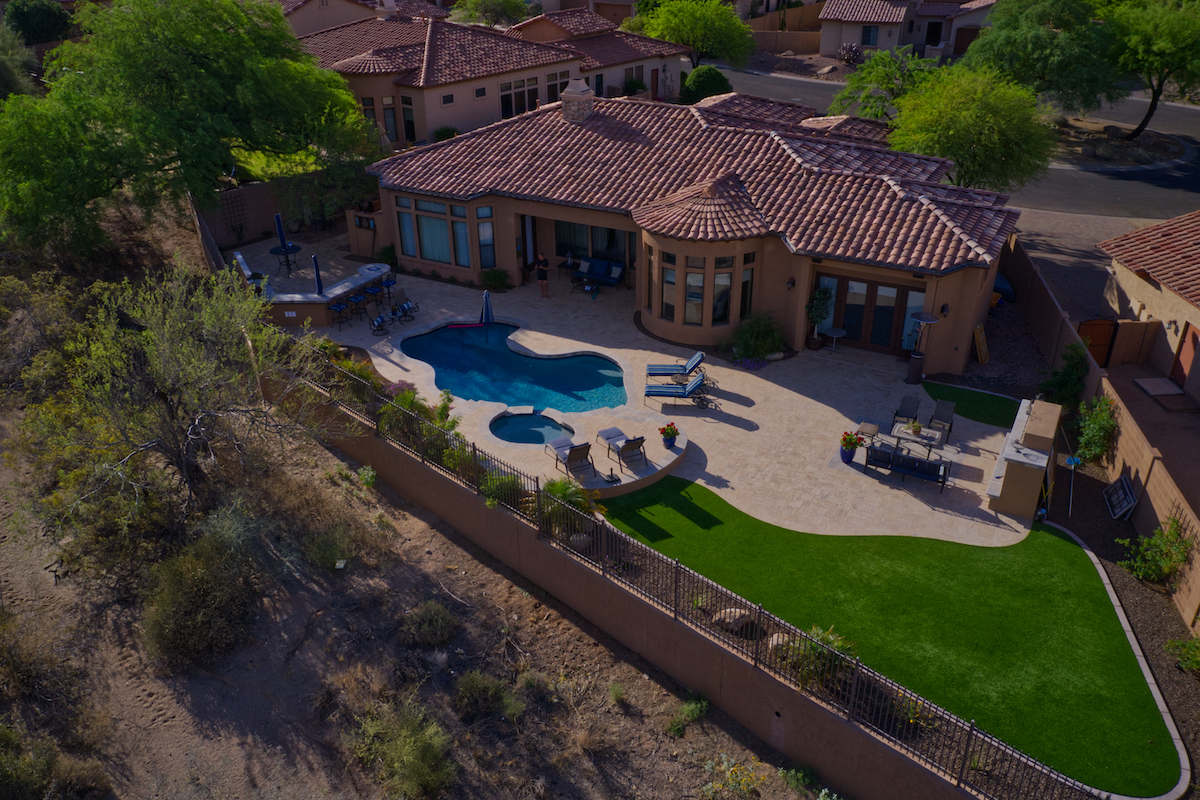
Drainage and Soil Preparation
One of the most overlooked aspects of turf installation is what lies beneath. A good base means your turf will handle rain, snow, and runoff without pooling water or developing dips.
- Fall soil conditions are forgiving. Installers can dig and grade without battling hardened summer clay or soggy spring mud.
- Drainage layers compact evenly. Crushed stone or decomposed granite is easier to settle into place in cooler, drier weather, reducing the risk of future shifting.
- Runoff testing is easier. With fall rain showers, you’ll see immediately how your new drainage base handles water, allowing adjustments before winter sets in.
Pets and Heavy Use
For families with dogs or active kids, fall installs give the turf time to “settle in” before peak outdoor months return. Infill (the sand or rubber granules brushed into turf fibers) compacts more evenly when foot traffic is moderate rather than constant. A fall installation gives months for infill to lock into place before spring playtime.
Dogs adapt quickly to turf, but giving them a cooler season to get used to it reduces odor buildup and gives you time to refine cleaning routines.
Seasonal Landscaping Transitions
Fall is naturally when homeowners reassess their yards—pruning, mulching, winterizing. Swapping in artificial turf fits into that rhythm.
- Clean slate effect: Instead of fighting to “save” a patchy lawn before winter, you start with a fresh, green surface that requires no prep.
- Complementary upgrades: Many homeowners install turf alongside other fall projects like fire pits, outdoor lighting, or patio extensions, creating a year-round outdoor living space.
Comparing Fall to Other Seasons

To really understand why fall stands out, it helps to set it alongside the other 3 “installation windows” and see how they compare. Each season comes with its own quirks—some technical, some financial, some lifestyle-driven—and those differences shape the experience you’ll have as a homeowner. The truth is, there’s no single “wrong” time to install artificial turf. If your lawn is failing or you’re ready to reclaim your weekends from mowing and watering, the best time might be right now.
That said, when you stack the seasons side by side, fall consistently offers a blend of favorable ground conditions, installer availability, and long-term payoffs that’s hard to beat.
Spring Installations
Spring feels like an obvious choice. There’s new growth, fresh projects, and warmer weather. But there are drawbacks:
- Soil is often too wet. Heavy rains can delay projects, make grading uneven, and slow base compaction.
- Installer demand spikes. Just like summer, crews are fully booked as homeowners rush into landscaping season.
- Allergies and pollen complicate work. Kicking up dust and pollen during excavation can be miserable if you’re sensitive.
Still, spring has one big advantage: if you want your lawn ready for summer, it gives you the earliest payoff.
Summer Installations
Summer is the busiest season for turf work, but not always the best.
- Heat complicates adhesive work. Turf seams can expand in direct sun, and adhesives cure too quickly, leading to weaker bonds.
- Working conditions are harder. Crews deal with extreme heat, which can mean longer installation timelines or reduced precision.
- Scheduling is toughest. Because demand is highest, you’ll likely wait longer or pay more.
Summer’s only real edge over fall is instant gratification—you get a lush lawn right when you want to use it most. But the trade-offs are significant.
Winter Installations
Yes, turf can be installed in winter in many regions, but it’s rarely optimal.
- Cold hinders adhesive curing. Below 40°F, many bonding materials simply don’t set properly.
- Frozen ground complicates excavation. Grading, trenching, and base work can stall if frost sets in.
- Short daylight hours limit progress. Crews have less working time each day.
The main case for winter installation is contractor availability, but the technical challenges can sometimes (but importantly, not always) outweigh that benefit.
Why Fall Wins Out
Stacked against the alternatives, fall consistently offers the best mix of conditions:
- Cool but not freezing weather
- Manageable soil moisture
- Installer availability without peak pricing
- A head start on spring enjoyment
It’s the “sweet spot” that balances technical feasibility with lifestyle advantages.
Long-Term Effects of a Fall Installation
A big advantage of choosing fall to install is that you can start reaping the benefits right away and keep stacking them for years. Artificial turf eliminates the annual cycle of mowing, fertilizing, seeding, and aerating, which means the money you would have poured into lawn care each spring is suddenly freed up. (And if you’ve ever spent a weekend dragging sprinklers around the yard or paid for irrigation blowouts before winter, you know how much time and money those routines eat up.)
By installing in fall, you effectively draw a line under that chapter of upkeep and step into a new one where your lawn no longer dictates your weekends.

That timing has environmental payoffs too. Autumn often coincides with drought conditions in many parts of the country. Laying turf now means you skip the heavy watering cycles of establishing cool-season grasses. Instead of watching gallons of water run into the street while new sod struggles to root, you’ve got a finished landscape that doesn’t ask for irrigation at all. Over years, this translates into thousands of gallons conserved—and a yard that doesn’t brown out when municipalities impose watering restrictions.
Fall also sets up your turf for a kind of “soft landing” into its first winter. The fibers and infill have months to settle naturally under lighter use before the heavy foot traffic of spring and summer begins. That early stabilization helps seams stay tight, infill distribute evenly, and drainage layers compact into their long-term performance. You might consider it sort of a “breaking-in” period for your yard. It’s invisible to the eye, but critical for the way it performs 5 or 10 years down the line.
Regional Climate Considerations
Of course, “fall” doesn’t mean the same thing everywhere. In northern states, where frost can set in by October, the installation window is shorter. Contractors there often recommend scheduling in early to mid-autumn, while the ground is still pliable and temperatures stay consistently above freezing. In milder climates like the Southeast, California, the Pacific Northwest, and so on, the window stretches much longer. There, crews can often work comfortably well into December.

That flexibility means homeowners in warmer regions have the luxury of installing almost year-round, but fall still provides a natural advantage. Cooler weather makes it easier on both installers and turf materials, and seasonal rain offers a built-in test for drainage systems. In desert regions, the case for fall is even stronger: adhesives cure more predictably in moderate weather, and crews avoid working in the dangerous heat of midsummer.
The takeaway is that while every climate has its quirks, fall tends to offer the widest safe margin of conditions — not too hot, not too cold, with soils that can be graded and compacted efficiently.
Frequently Asked Questions (FAQ)
Even with all the seasonal advantages, homeowners usually have a handful of practical concerns before scheduling a turf project. Let’s tackle some of the big ones.
Q: How cold is too cold for installation?
Most installers prefer to work when daytime highs stay above 45–50°F. Below that, adhesives may not cure correctly, and frozen ground can prevent grading or compaction. That’s why fall works so well: you’re ahead of those temperature dips.
Q: Does snow or frost damage new turf?
No — artificial grass is built for all-weather exposure. If installed correctly with a stable base and proper drainage, a turf surface will handle freeze–thaw cycles with no problem. The key is ensuring seams are bonded in temperatures where adhesives set properly, which fall naturally provides.
Q: How long does the installation take?
A typical residential yard takes two to five days, depending on size and complexity. That includes excavation, base preparation, turf laying, seam bonding, and infill distribution. Fall’s cooler weather helps crews work more efficiently without battling heat exhaustion or rain delays.
Q: Will a fall installation affect the lifespan of turf?
If anything, it improves it. Turf installed during extreme heat or cold can suffer from overstretched seams or incomplete curing. Fall installations give the system a balanced start, which contributes to a consistent 15–20 year lifespan depending on product and use.
Beyond the Seasons: The Everyday Benefits of Installing Artificial Turf
No matter when you install it, artificial turf is a long-game upgrade. The savings in water, fertilizer, and mowing add up year after year. Families get back weekends that used to be spent pushing a mower, and pets get a yard that drains well and never turns to mud. Curb appeal doesn’t fade seasonally, and resale conversations often perk up when buyers see a yard that looks perfect with only a fraction of the usual ongoing upkeep required.
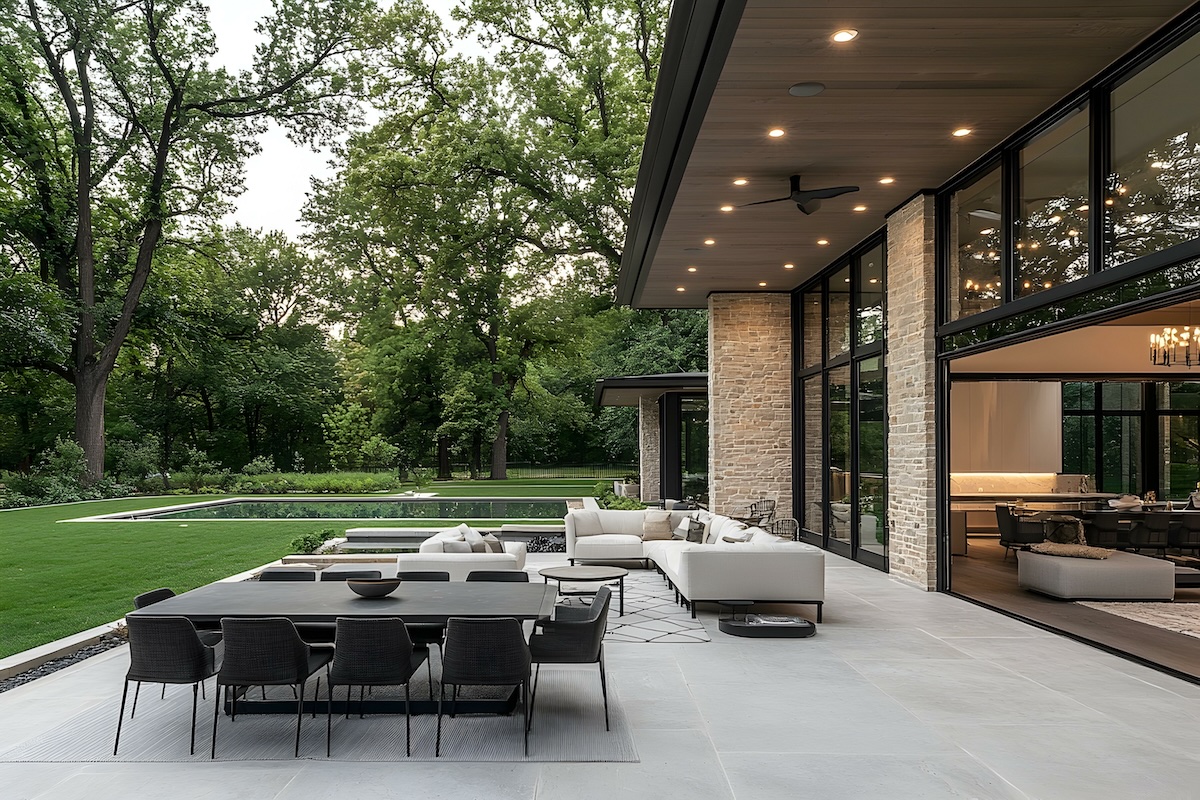
For many homeowners, the choice comes down to lifestyle. Do you want to spend autumn raking, mowing, and winterizing a patchy lawn, or do you want to step into spring with a yard already ready for barbecues, kids, and quiet evenings outside? Fall sets you up for the latter.
Key Takeaways
- Fall offers the best balance of conditions for turf installation: mild weather, stable soil, and adhesives that cure correctly.
- Installers often have more availability and flexibility, meaning you get projects done sooner and sometimes at better rates.
- Turf laid in fall is ready to perform year-round, skipping the hassles of winterizing natural grass and starting spring in perfect condition.
- Regionally, the fall window may be short or long — but almost everywhere, it’s one of the easiest times to get the job done.
If you want the single “best” season to install artificial turf, fall generally wins the comparison. It minimizes technical risks, sidesteps peak-season stress, and pays dividends the moment winter rolls in. But the more important point is that the real best time might simply be now. When you think about it, every month you wait is another month spent watering, mowing, and patching up natural grass that won’t survive the next drought or frost.
Artificial turf delivers the same payoff whether it goes in during September, March, or July — but when installed in fall, the process is smoother and the benefits arrive sooner. If you’re weighing the decision, consider this season your green light.

